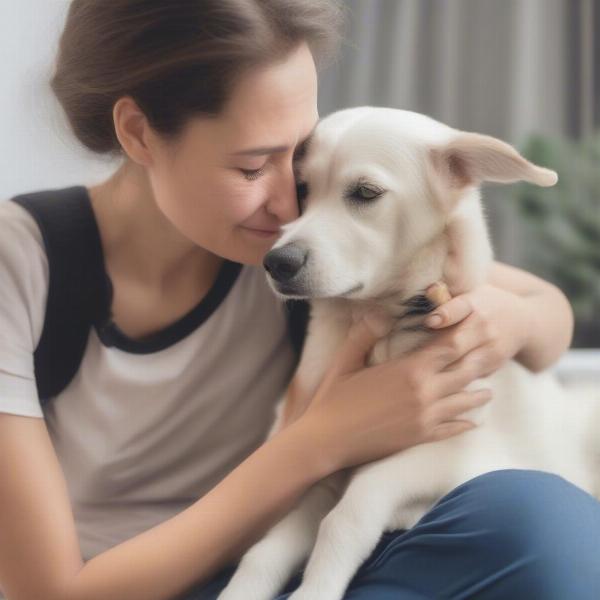Subcutaneous injections, often called sub-Q or SQ injections, are a common method of administering medication to dogs just beneath the skin. Understanding how to give these injections correctly is crucial for any dog owner whose pet requires this type of medication. This guide will provide a comprehensive overview of sub-Q injections in dogs, covering everything from preparation to administration and aftercare.
Understanding Subcutaneous Injections
Subcutaneous injections involve injecting fluids into the loose connective tissue between the skin and the muscle layer. This method allows for slower absorption of medication compared to intramuscular injections, making it suitable for various treatments, including insulin for diabetes, fluids for dehydration, and certain vaccines.
Preparing for a Subcutaneous Injection
Before administering a sub-Q injection, gather all necessary supplies: the prescribed medication, a sterile syringe of the correct size, an alcohol swab, and a sharps container for safe disposal of used needles. Always check the medication’s expiration date and ensure the syringe is appropriate for the prescribed dosage. Wash your hands thoroughly before handling any of these items.
Locating the Injection Site
The most common injection sites for sub-Q injections in dogs are the scruff (loose skin on the back of the neck), the flank (loose skin on the side of the body), and the chest. It is important to rotate injection sites to prevent tissue irritation and scarring. Gently lift the skin to create a “tent” before inserting the needle.
Administering the Injection
Once you’ve created a skin tent, insert the needle at a 45-degree angle into the base of the tent. Aspirate (gently pull back on the plunger) to ensure you haven’t hit a blood vessel. If you see blood, withdraw the needle, replace it with a new one, and try again at a different location. If no blood appears, slowly inject the medication. After injecting, withdraw the needle and gently massage the injection site to help distribute the medication.
Aftercare and Potential Complications
After administering the injection, monitor your dog for any adverse reactions, such as swelling, redness, or pain at the injection site. Mild reactions are sometimes normal, but if you notice any significant or persistent issues, contact your veterinarian immediately.
 Dog After Injection Care
Dog After Injection Care
Frequently Asked Questions
- How do I know what size syringe to use? Your veterinarian will prescribe the correct syringe size based on the medication and dosage.
- Can I reuse needles for subcutaneous injections? No, always use a new, sterile needle for each injection.
- What if my dog reacts badly to the injection? Contact your veterinarian immediately if your dog experiences any significant or persistent adverse reactions.
- How often should I rotate injection sites? Rotating sites with every injection is ideal, but at least every few days is recommended.
- Can I give my dog a subcutaneous injection myself? Yes, with proper training and guidance from your veterinarian.
- What if I accidentally inject the medication into the muscle? Contact your veterinarian immediately.
- How do I dispose of used needles? Use a sharps container and follow your local regulations for disposal.
ILM Dog: Your Partner in Canine Care
ILM Dog provides expert advice and resources on all aspects of dog care, from breed selection and health to training and nutrition. We are dedicated to helping dog owners worldwide provide the best possible care for their furry companions. Whether you’re a new dog owner or a seasoned expert, ILM Dog has the information you need. Contact us today for personalized guidance and support. Email: [email protected]. Phone: +44 20-3965-8624.